The National Shelter System and Physical Accessibility - Time to Look Under the Hood
NSS Questions and Concerns
How accurate and trustworthy is the NSS physical accessibility information?
Are phone surveys and self-reports allowed and if yes, how is data accuracy accounted for?
What Red Cross oversight exists to ensure the quality and accuracy of the information?
Are regular audits conducted to test the accuracy of the data?
How often is the survey data updated? Is old survey data removed?
Who is Red Cross accountable to in terms of the accuracy of the data?
Concern: There are jurisdictions who rely exclusively on information found in the NSS and believe jurisdictions do not need to survey mass care sites for accessibility as this obligation is met by the NSS. This results in a false sense of the jurisdiction having met their ADA obligations for physical accessibility of mass care sites. Jurisdictions can pass along ADA compliance obligations via contracts and memorandums of understanding (MOUs), but this does not mean they relinquish responsibility for ADA compliance. Jurisdictions remain responsible for oversight of meeting ADA obligations and for ensuring that the responsibilities they pass along to contractors, vendors or other entities with whom they have MOUs also meet ADA standards and requirements. In addition, any recipient or sub-recipient of federal funds is also required to comply with the physical, program and effective communication access requirements included in the Rehabilitation Act of 1973, as amended.
Upon investigation it appears that none of the Red Cross physical accessibility survey versions in use are inclusive of all the accessibility elements required for the provision of mass care found in the Department of Justice (DOJ) ADA Checklist for Emergency Shelters, https://www.ada.gov/pcatoolkit/chap7shelterchk.htm. This DOJ tool was developed in 2007 to assist State and local officials and operators of emergency shelters to determine whether a facility being considered for use as an emergency is accessible.
Simplified surveys that are not comprehensive and inclusive of all accessibility requirements, are not acceptable! And statements (found in Red Cross guidance as well as the DOJ ADA Checklist like “Facilities built in 1993 or later, or extensively altered in 1992 or later, after the Americans with Disabilities Act (ADA) went into effect, may have few, if any, barriers to accessibility and are often good choices for shelters” are inaccurate and can lead to dangerous assumptions, unless they are substantiated by a trained surveyor using an ADA compliant checklist.
1 Left to right top: scooter user confronting building entrance step, fire hydrant blocking sidewalk access route; Center: utility poll blocking crub ramp; Botton: High curb blocking route access, motorized wheelchair user about to fall at unsafe curb ramp.
2 Dangerous, flimsy, wooden ramps at shelter entrances.
3 Clear directional signage with text, accessibility logo and arrow showing locations of accessible parking, entrances and restroom.
4 Inaccessible bathrooms, portable bathroom units with steps.
5 Accessible portable shower and restroom units.
6 Portable six pay telephones mounted on wheel trailer with inaccessible reach ranges.
7a Tables with a variety of communication devices (computers, cell phones and chargers)
7b Tables with a variety of communication devices (computers, cell phones and chargers)
Thorough, current and accurate accessibility surveys that include all the elements in the DOJ shelter checklist are critical. Over the years, a variety of substandard physical access survey versions have been used to populate NSS data. Recent versions have included more, but not all the needed accessibility requirements. This also brings into question if survey data is old and not refreshed, at least every three years, is it removed?
A revealing example: The Red Cross’s 2011 survey version asks regarding restroom grab bars:
“Appropriate Grab Bars yes/no,” as compared to the DOJ questions which asks: “Is a horizontal grab bar at least 40 inches long securely mounted on the adjacent side wall 33 to 36 inches above the floor with one end no more than 12 inches from the back wall 33 to 36 inches above the floor? [ADA Standards § 4.16.4; 4.17.6] Yes/No” and “Is a second horizontal grab bar at least 36 inches long securely mounted on the back wall with one end no more than 6 inches from the side wall 33 to 36 inches above the floor? [ADA Standards § 4.16.4; 4.17.6] Yes/No.”
A project on the accessibility of emergency shelters was conducted by the Montana Disability and Health Program in partnership with the Montana Centers for Independent Living (CILs) and the Montana Department of Public Health and Human Services and its partners (Montana Disaster and Emergency Service and Hospital Preparedness Program) to determine if Montanans with disabilities were adequately represented in state and county Emergency Preparedness plans. Part of this work involved conducting accessibility assessments at regional centers designated emergency shelters. These assessments were conducted by Accessibility Ambassadors, whom are disability and accessibility experts, from the four Montana CILs using the 2007 Department of Justice (DOJ) ADA Checklist for Emergency Shelters that included relevant 2010 ADA updates. Results indicated significant accessibility barriers at these emergency shelters prompting a review of the accessibility shelter tools. The 2007 DOJ ADA Checklist for Emergency Shelters was compared to the 2011 Red Cross Shelter Facility Survey by MTDH staff.
9 “Crosswalk of Emergency Shelter Instruments: In total, 13 accessibility areas and resources were categorized to provide comparison between the DOJ and ARC (Red Cross) instruments. The DOJ tool included a total of 155 accessibility criteria and the ARC tool included a total of 70 accessibility criteria. The DOJ tool included more accessibility criteria for all categories identified in comparison to the ARC instrument. Additionally, the DOJ tool incorporated accessibility criteria whereas the ARC did not for the following sections: Service/Check-in Area (2; 0), Sleeping Area (3; 0), Medical Care Areas (2; 0), Public Telephone (7; 0), and Drinking Fountains (6; 0). See Figure 2 for a side-by-side comparison of the tools.” [Traci, M., Russette, H., Thigpen, I. (2016, November). Accessibility of emergency shelters in a rural state: Applications of the Accessibility Ambassador project to the Shelter 2020 statewide shelter project. Poster presented at the 144th American Public Health Association (APHA) Annual Meeting, Denver, CO.]
What types of mass care sites are included in the NSS?
Concern: The mass care sites includes in the NSS are: Red Cross shelters, warming and cooling centers, evacuation centers, and pet and animal co-located shelters. But equally important is the accessibility of sites that include medical shelters, mass feeding sites, safe refuge sites, resettlement processing centers, relocation centers, points of dispensing and commodity distribution sites, local assistance centers, disaster resource and recovery centers, emergency child care and recreation centers, etc. These sites are all required to be physically accessible.
10 Person figuring out which sites should be opened. Map indicates location of sites.
Does NSS contain clearly understood accessibility identifiers, so that users can easily and quickly determine which surveyed sites are ready for use?
Concern: This type of easy quick and accurate designations is critical to an inclusive, accessible and ADA compliant response. Without it, decision making regarding what sites to use risks being discriminatory and non-compliant, resulting in a disproportionate impact for disaster survivors with disabilities. As example of shelter ready identifiers:
1. ADA compliant - "User Ready"
2. ADA compliant with temporary modifications completed, (such as portable ramps at the entrance and temporary restriped or clearly marked accessible parking spaces, accessible portable restrooms andshowers.) These items can be quickly secured and in place before the site is opened,
3. Not ADA compliant
NSS is searchable by “Handicap Access” (an outdated term) unclearly defined by the “User Guide National Shelter System” mentioned above: “A shelter may be handicap accessible (ramps to get in) but not ADA compliant (no internal features like handrails in the bathrooms, etc.) Check Yes or No. “
There are accessibility elements in posted NSS surveys that lack a “yes” or a “no” without any indication as to why it was unanswered. An advanced accessibility search is available, but only by specific access element, for example parking, but not as an overall accessibility identifier.
Is each survey available in its entirety so that specific details can be checked?
Is the version of the survey dated?
Is each survey signed and dated by the individuals who conducted the survey?
What type of physical accessibility training do surveyors receive and how often are these competencies refreshed?
Is there a uniform training requirement for surveyors including some type of surveyor certification?
Concern: Surveyor competencies and reliability is key and training is critical. Training includes developing surveyor competencies such as understanding the accessibility questions and their intent, filling out the survey properly, and accurately using measurement tools (tape measure, digital level or bubble level, a door pressure gauge, and camera). Examples of important measurements include door openings, door labor force, turn-around space in bathrooms and cross slopes .
Does the Red Cross plan to revamp NSS? What is the projected scope of work?
Will the 2011 Red Cross survey be revised to be compliant with the DOJ Checklist for Emergency Shelters? If yes, when?
Concern: In summary, the NSS should not be a repository for inadequate, questionable, data. Relying on physical accessibility surveys that are not compliant with the DOJ survey and with questionable accuracy is equivalent to taking a long plane flight with no seats and no working bathrooms. NSS must have thorough, accurate and current data, with specific focus on ADA standards for accessible emergency mass care, in order for the Red Cross to meet the commitment of including all people.
NSS mass care physical accessibility information has critical flaws which need immediate attention. Stringent standards must be in place, monitored and enforced. These standards must include: use of an ADA compliant survey tool, surveyor training, and updating and refreshing data. The safety, health and independence of shelter users with disabilities, older adults, and others with access and functional needs are at stake.
"Quality is never an accident; it is always the result of high intention, sincere effort, intelligent direction and skillful execution; it represents a wise choice of many alternatives.”
William A. Foster

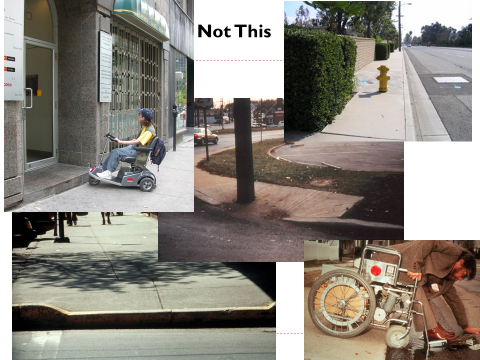
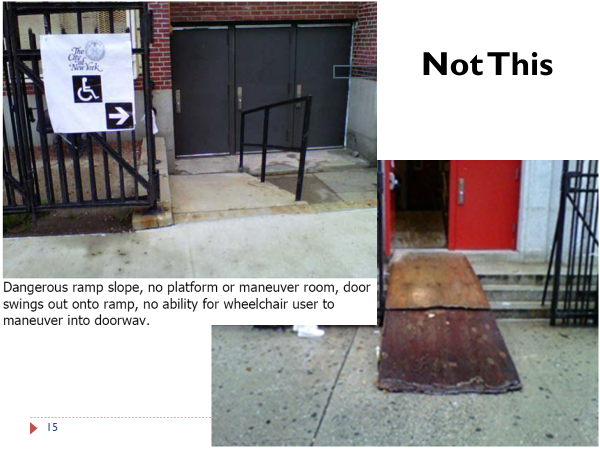
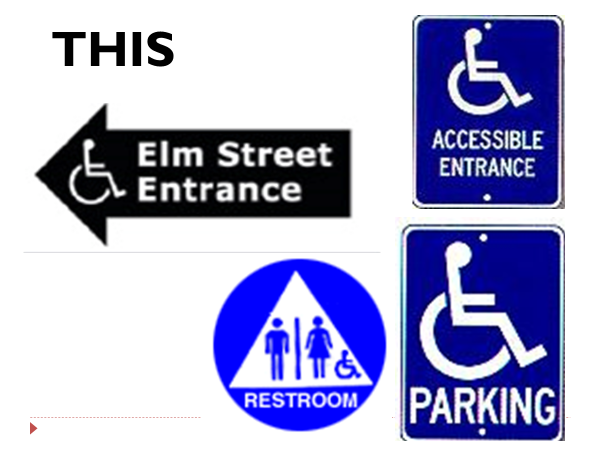
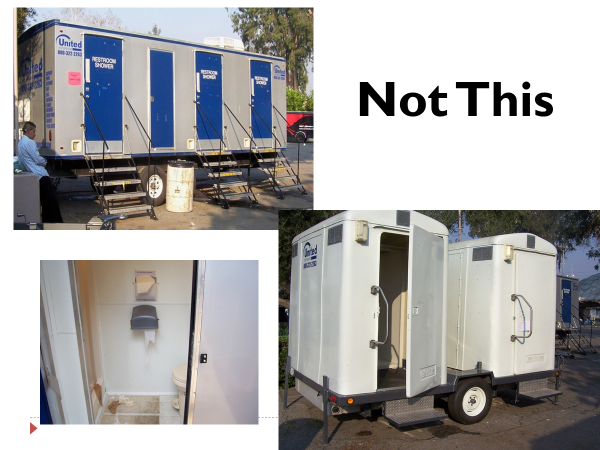
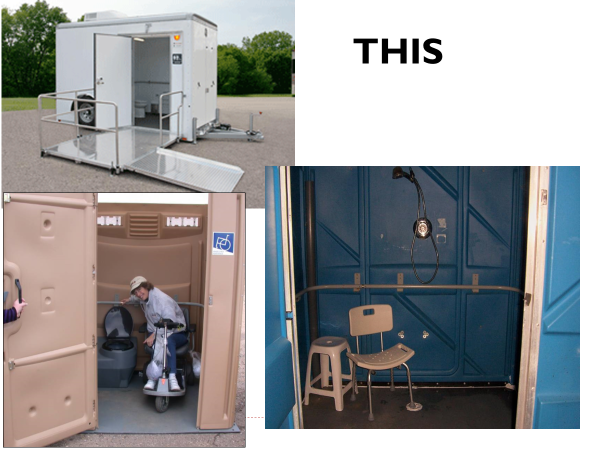
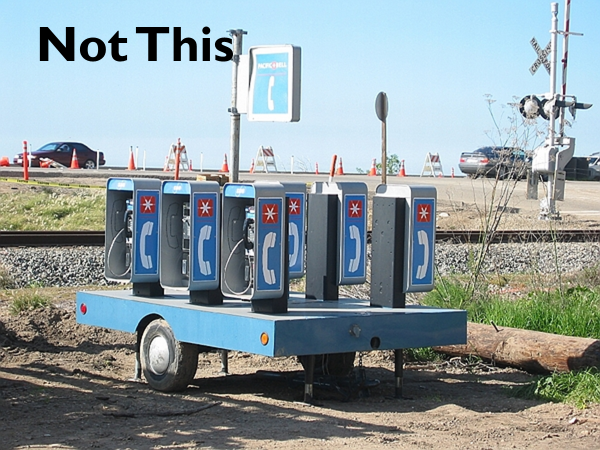
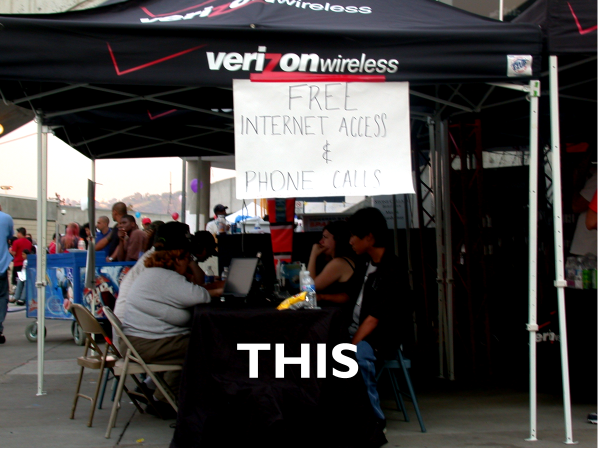

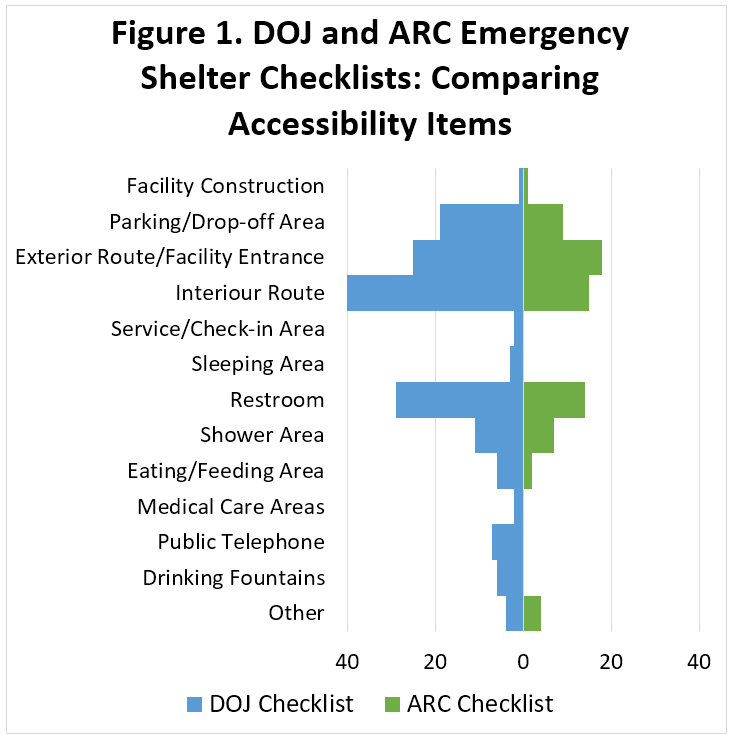
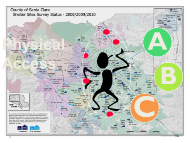
User Comments/Questions
Add Comment/Question